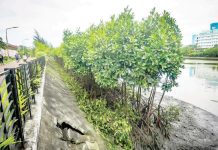
BY DOMINIQUE GABRIEL G. BAÑAGA
BACOLOD City – The Philippine Institute of Volcanology and Seismology (Phivolcs) monitored a sudden increase in Kanlaon volcano’s gas emission.
Based on Phivolcs advisory yesterday morning, the sulfur dioxide (SO2) emission from the volcano increased to an average of 1,099 tonnes per day – the highest value recorded this year and higher compared to its average of 124 tonnes per day recorded since March this year.
Kanlaon last erupted in December 2017 and has been under Alert Level 1 status since 2020.
A sudden increase in SO2 emission means that the volcano’s magma is relatively near the surface, according to the United States Geological Survey (USGS).
From April 1 to 30 this year, Phivolcs recorded 141 volcanic earthquakes at the Kanlaon volcano, or an average of five per day.
Phivolcs volcanologists explained the earthquakes occurred at shallow depths roughly 10 kilometers from the surface and ran across the northern to western portions of the edifice.
Ground deformation data also showed short-term inflation of the lower and middle slopes since March indicating slow pressurization within the volcano.
Despite the sudden increased activity, Phivolcs said Kanlaon remains under Alert Level 1 status. The public and local government units are advised to be vigilant and refrain from entering the volcano’s four-kilometer permanent danger zone due to increased chances of sudden and hazardous phreatic eruptions.
Phivolcs also told the Civil Aviation Authority of the Philippines to advise pilots to avoid flying close to the volcano’s summit as any ejecta from a sudden phreatic eruption is hazardous to aircraft.
Kanlaon is the highest point in the Visayas with an elevation of 2,465 meters./PN





